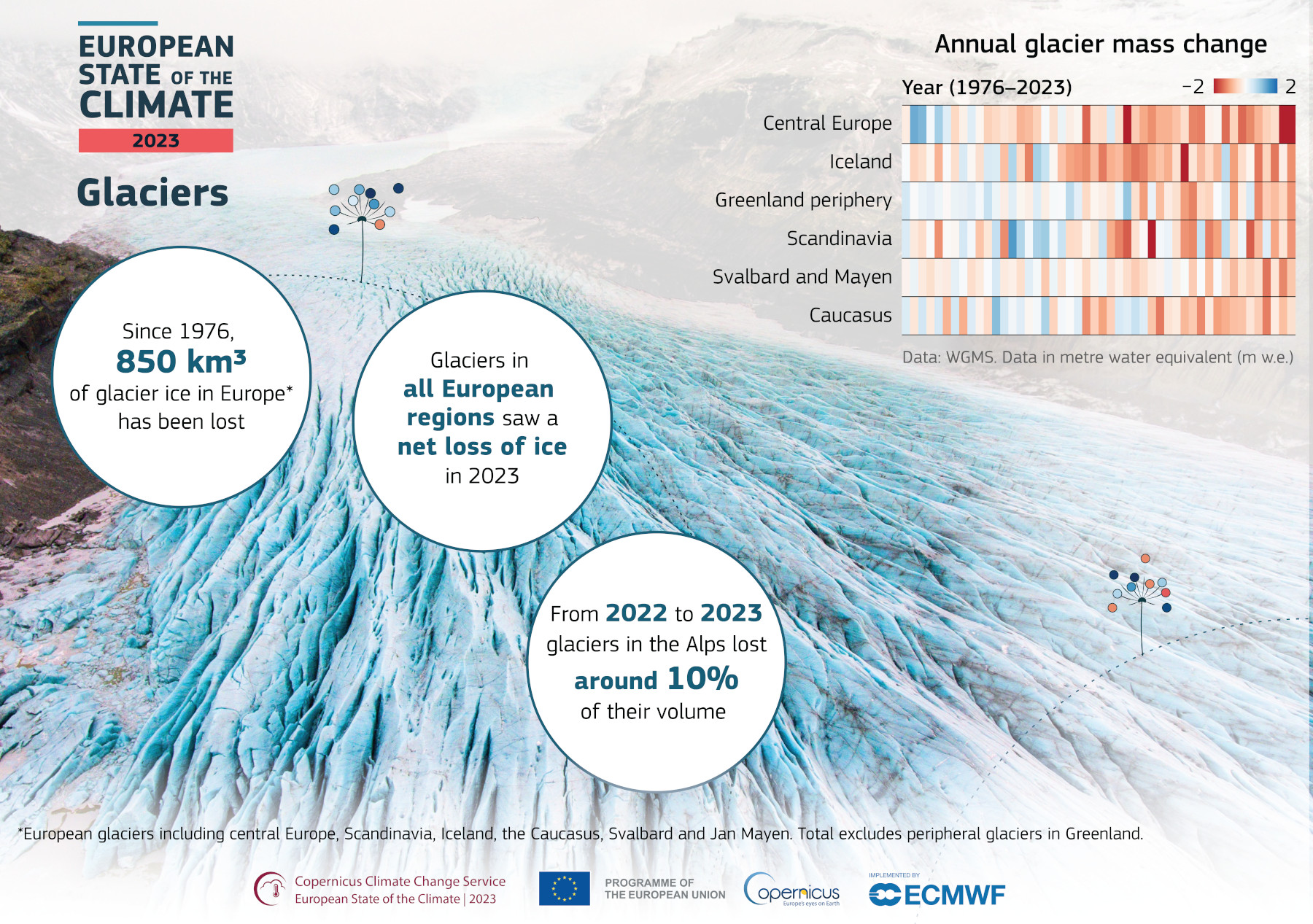Navigation auf uzh.ch
Navigation auf uzh.ch
The Copernicus Climate Change Service (C3S) and the World Meteorological Organization (WMO) jointly released the European State of the Climate 2023 report. The report provides a summary of the climate in Europe, in the Arctic, and globally, based on authoritative data sources compiled by institutions across Europe. The World Glacier Monitoring Service (WGMS) contributed glacier data and analyses.

Since the 1980s, Europe has been warming twice as fast as the global average, becoming the fastest-warming continent on Earth. This is due to several factors, including the proportion of European land in the Arctic, which is the fastest-warming region on Earth, and to changes in atmospheric circulation that favour more frequent summer heatwaves.
The report highlight that 2023 was the joint warmest year on record, with 2020. It was a year of contrasts across Europe, with extreme heatwaves and large wildfires, alongside flooding and drought. Glaciers in the European Alps have lost around 10% of their volume in the last two years. Globally, glaciers lost 600 Gt of water in 2023. This is the largest annual mass loss in a record going back to 1976, and about 100 Gt larger than any other year on record. It is equivalent to almost five times the amount of ice contained in all the glaciers in central Europe.
More information :
European State of the Climate 2023
European snow and glaciers in 2023
Global glacier mass changes
Regional glacier mass changes